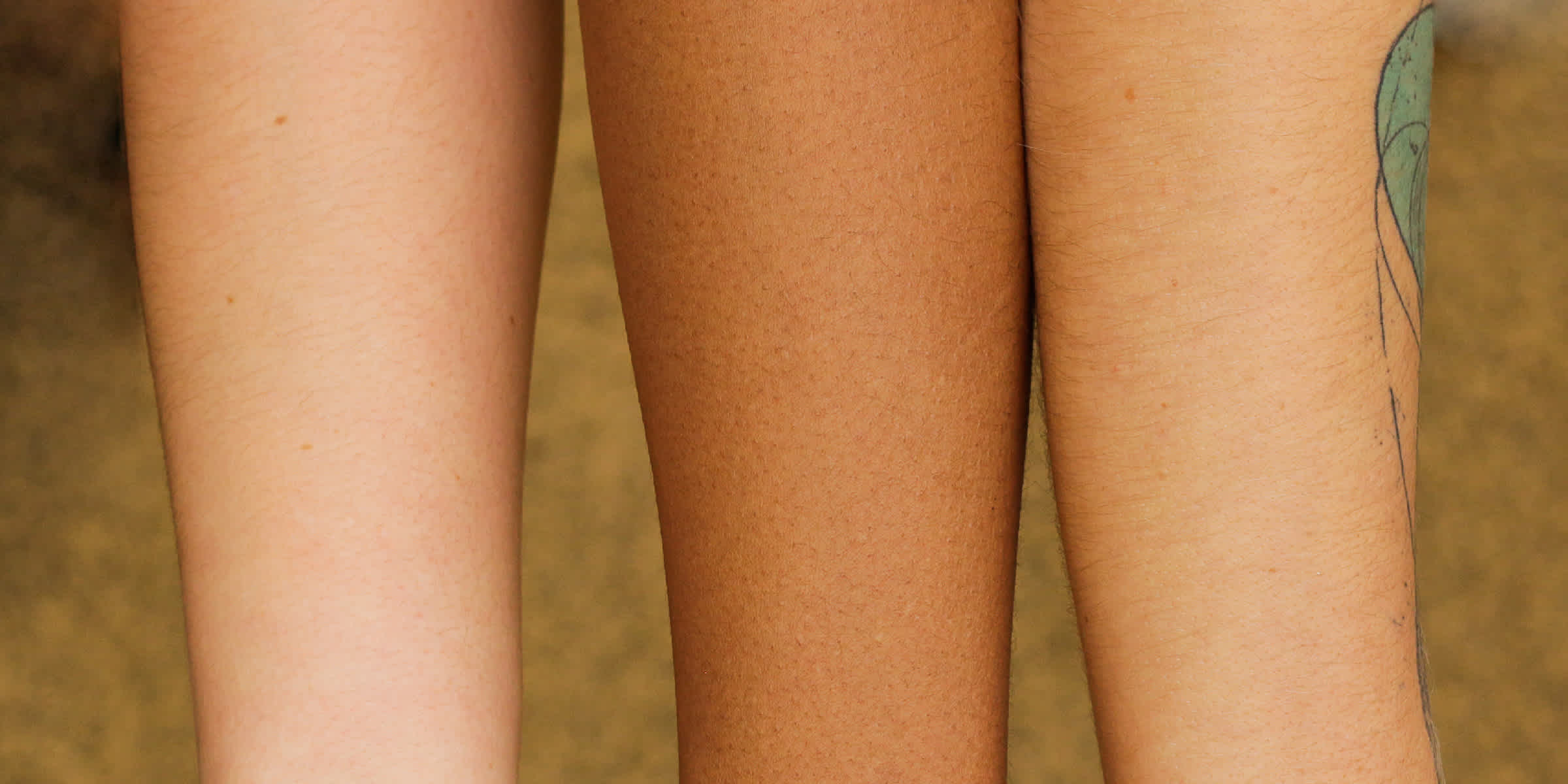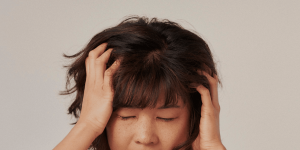Photo by Marta Pucci
Birth control, your skin, and your hair
How different types of hormonal birth control may affect your skin and hair.
Top things to know
Estrogen has the effect of improving acne, while certain progestins (a synthetic version of the hormone progesterone) may worsen acne
Androgens (a group of hormones that includes testosterone) can cause oily skin and excess hair growth
The type of progestin used in birth control matters, as some have a more androgenic effect than others
What you may have heard about how birth control affects skin and hair
You may have heard that hormonal birth control can improve acne and make your hair fuller. You may have also heard that hormonal birth control can cause acne or make your hair fall out.
It can be confusing, especially when your personal experience is different from that of your friends and loved ones, or what you’ve been told to expect.
Not all hormonal birth control is the same, so the side effects aren’t all the same either. Hormonal birth control comes in many forms (implants, IUDs, injections/shots, pills, patches, and rings) and contains different types and levels of hormones.
Combined hormonal contraceptives are birth control methods that contain two hormones (estrogen and progestin), like the pill, patch, or ring.
Progestin-only contraceptives* contain just a form of progestin hormone (a synthetic version of the hormone progesterone), like the implant, hormonal IUD, shot, or mini-pill. Different forms of birth control may affect individual people in different ways.
Hormonal fluctuations during the menstrual cycle cause changes in skin and hair. So it makes sense that the hormones found in birth control can as well. Read on to learn how different methods may improve or worsen the condition of the skin or hair.

What your healthcare provider might say
Birth control pills that contain both estrogen and progestin can be prescribed to treat acne and hirsutism (the growth of more dark, coarse hair than expected on areas of the body like the face, chest, abdomen, and thighs), and sometimes hair loss.
Progestin-only methods such as the implant, hormonal IUD, or shot may worsen acne, hirsutism, or hair loss in some people.
To understand these effects requires a little anatomy and physiology lesson.

How hormones affect skin and hair
Cells in the skin and hair follicles contain receptors, where hormones activate the cell to produce certain changes.
Estrogen impacts hair and skin by decreasing oil production and keeping hair in its growth phase longer (1).
Androgens (a group of hormones that includes testosterone) cause the skin to produce more oil (2), and cause hair follicles in certain parts of the body to produce hair that is coarse and dark (2,3), while also potentially causing hair loss from the scalp in some women (2,4).
The estrogen found in methods with both estrogen and progestin—like the pill—can suppress the ovaries’ production of androgens, and increase the amount of a protein called sex hormone binding globulin (SHBG) which ties up androgens found in the blood so that they can’t enter the cells in the skin and hair follicles (5).
The potential benefits of using hormonal birth control to treat acne, hirsutism, or hair loss have to be considered along with the potential for serious side effects. Even though they are rare, blood clots can develop as a result of using hormonal birth control and they can be life-threatening. Discussing your priorities and goals with your healthcare provider can help determine what the best birth control or treatment is for you.
Here’s why it’s tricky
Not all hormonal birth control is the same. Aside from the categories of combined versus progestin-only, the specific type of progestin varies between methods, and can change the side effects to hair and skin.
Some progestins are more androgenic (likely to activate the androgen receptors) and could make the skin and hair more oily or lead to excess hair growth. Other progestins are anti-androgenic (block the androgen receptors) and may make the hair and skin less oily and protect against excessive hair growth (6). This is why the type of progestin may be important for some people to consider.
The specific hormone, dosage, and route can all impact whether someone has beneficial or unwanted side effects.
What the research says about the different types of birth control and skin/hair
Progestin-only contraceptives
Implant (e.g. Nexplanon, Jadelle): The Nexplanon implant contains a progestin called *etonogestrel*. An analysis of 942 people who used the etonogestrel implant for an average of two years found that 12% reported acne, but only about 1% stopped using the implant because of this side effect (7). In a study done in Chile where *etonogestrel* implant users were asked about acne before starting the implant and then while using it, 13% reported new or worsening acne during the first two years of use, but the same number of people reported that their acne improved while using the implant (8).
The Jadelle implant uses the progestin *levonorgestrel*. In a study of 594 people using this implant over the course of five years, five people stopped using it because of acne, four because of hair loss, two because of other hair problems such as hirsutism or coarse hair, and four had it removed because of "other skin problems" (9). This study did not report the number of participants who had the side effect but continued with the implant.

Higher-dose hormonal IUD (e.g. Mirena, Liletta): The hormonal IUDs Mirena and Liletta contain the progestin levonorgestrel. In a study of more than 17,000 people using the hormonal IUD in Finland, 35% of respondents reported acne, 16% reported loss of hair from the scalp, and 17% reported "excessive hairiness" on the body (10). All of these side effects were most common in people younger than 33 and decreased with age (10).
One study showed that people using the hormonal IUD had more acne pustules after using the birth control for a year compared to people using the non-hormonal, copper IUD (11). The difference between these groups was small, so it's unknown if there was an impact felt by the participants.
In a study done in New Zealand of people using the hormonal IUD, 3 out of 920 people surveyed reported hair loss (12). These same researchers looked at cases of hair loss associated with use of the hormonal IUD that had been reported to the World Health Organization (WHO). While hair loss was a rare side effect, by looking at the timing of the hair loss in relation to starting the IUD and the resolution of hair loss after the IUD was removed, they were able to determine that some of the cases in New Zealand and elsewhere were “probably” caused by the IUD (12).
Lower-dose hormonal IUDs (e.g. Kyleena, Jaydess, Skyla): The IUDs Kyleena, Jaydess, and Skyla also contain the progestin levonorgestrel, but at lower doses than Mirena and Liletta.
During a 3-year long study conducted in North America, South America, and Europe, acne that was possibly related to the use of the hormonal IUD was found in 10% of people using either of the lower dose hormonal IUDs (13).
Another study of a mostly Asian participant population using Jaydess for up to three years, acne was reported in only about 3% of participants, but about half of those reporting acne had the implant removed because of it (14).
The injection/shot (e.g. Depo-Provera): In a study of 536 people using the Depo shot, side effects affecting the skin and hair were common. For people who started using the shot for the first time, 8% reported acne or other skin problems after 3 months, and this number increased to 14% after 9 months (15). In the same group, hair loss was reported by up to 11% of Depo users over the first 9 months of use, and up to 3% said they had facial hair as a side effect (15).
In another study, 6% of people developed facial hair growth after using the shot for six months, compared to 1% of people who were using non-hormonal birth control methods (16).
Combined hormonal contraceptives (estrogen and progestin)
The pill (various brands): An analysis of 31 studies found that the pill is effective in treating acne, but less is known about how specific pills compare in their ability to improve acne (17).
Ten studies compared a birth control pill to a placebo. Nine out of ten found that the pill was effective for improving acne, and one of the ten did not have enough data to include in the analysis (17).
Seventeen studies compared two different types of pills to see if a specific formula or dose made a difference in their ability to improve acne. Results were inconsistent, but pills containing anti-androgenic progestins may improve acne more than pills with androgenic progestins (17).
Combined oral contraceptive pills are recommended as an initial treatment for people who have hirsutism (excess, unwanted body hair) and who are not trying to become pregnant (18). The pill is effective in treating mild hirsutism, but can take six to 12 months to show improvement and may need to be combined with other medications or treatments (19). Pills containing the anti-androgenic progestins drospirenone and cyproterone acetate may be better than other forms of progestin at improving hirsutism (19), but the Endocrine Society does not recommend a specific pill (18).
In a small study that only included white participants, 31 people with oily hair were given a birth control pill containing the progestin chlormadinone for one year. Participants reported that their hair was less oily and in better condition after three months, and this improvement continued throughout the year (20). The researchers also rated the participants' hair as more dense with less dandruff and irritation after a year (20). This formulation of birth control pill is not available in the U.S., but is available throughout Europe and Central and South America.
People using birth control pills containing the progestin desogestrel were less likely to develop hair loss than people using a non-hormonal birth control method such as abstinence, condoms, or surgery in a two-year long study (16). Birth control pills may be prescribed—often in combination with other medications—to help stop progressive hair loss in people who are having androgen-related hair loss (21,22).
The patch (e.g. Xulane): There is very little research into how the patch affects skin and hair condition. Among a small group of adolescents who had acne before starting the patch, acne improved in 33%, worsened in 17%, and stayed the same in 50% after 7 months of use (23).
The ring (e.g. Nuvaring): There is also limited research on the ring in this area. In an analysis of three studies, people using the birth control ring for three to 13 months report less acne than people using the pill (P).
Choosing a method
It’s important to talk with your healthcare provider to determine the safest and best fit for you. Before starting a birth control method, ask your healthcare provider questions and share your concerns about potential side effects so that you can decide together what is most suitable for you. If you are experiencing unwanted side effects on a birth control method, you may need to advocate for yourself to make sure your healthcare provider takes your concerns seriously.
Using Clue to track the condition of your skin and hair when you start a new birth control method can help you see if anything is changing.

